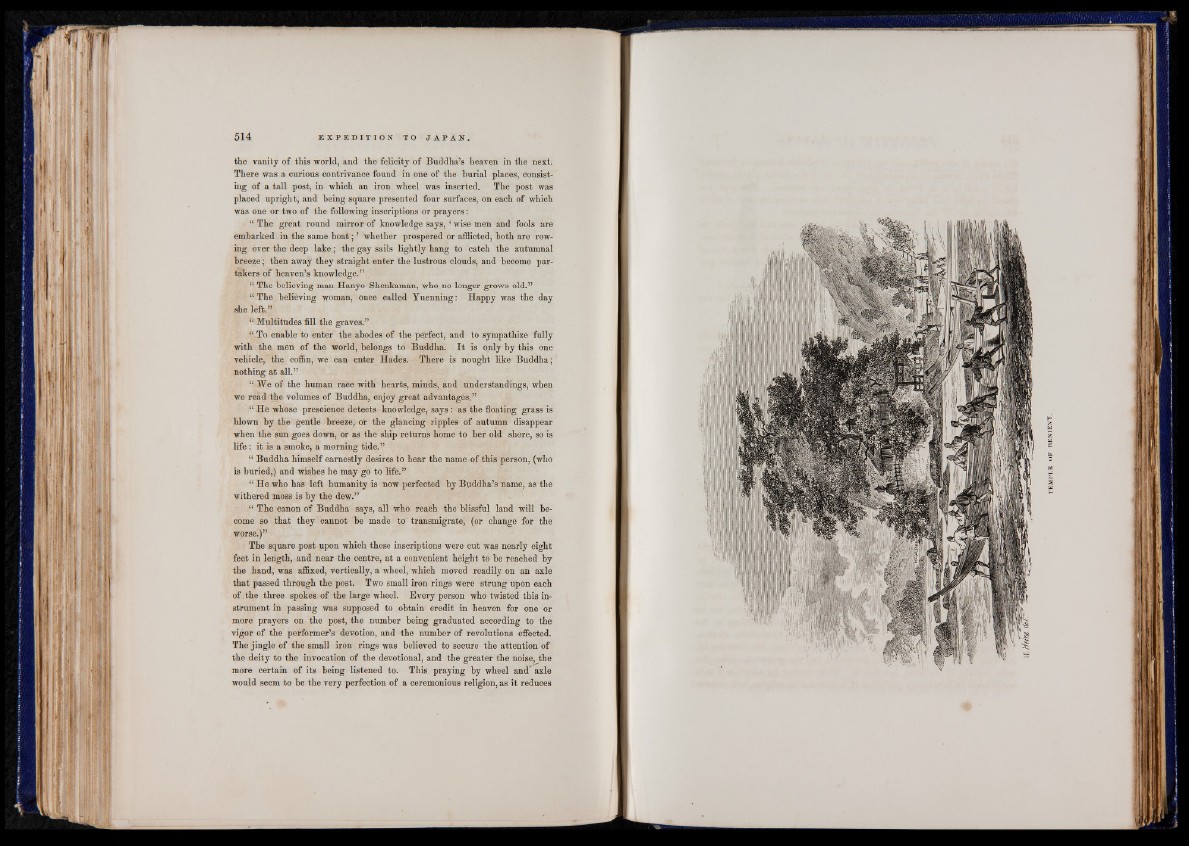
the vanity of this world, and the felicity of Buddha’s heaven in the next.
There was a curious contrivance found in one of the burial places, consisting
of a tall post, in which an iron wheel was inserted. The post was
placed upright, and being square presented four surfaces, on each of which
was one or two of the following inscriptions or prayers:
“ The great round mirror of knowledge says, ‘ wise men and fools are
embarked in the same boat; ’ whether prospered or afflicted, both are rowing
over the deep lake; the gay sails lightly hang to catch the autumnal
breeze; then away they straight enter the lustrous clouds, and become partakers
of heaven’s knowledge.”
1 The believing man Hanyo Shenkaman, who no longer grows old.”
“ The believing woman, once called Yuenning: Happy was the day
she left.”
u Multitudes fill the graves.”
“ To enable to enter the abodes of the perfect, and to sympathize fully
with the men of the world, belongs to Buddha. I t is only by this one
vehicle, the coffin, we can enter Hades. There is nought like Buddha;
nothing at all.”
“ We of the human race with hearts, minds, and understandings, when
we read the volumes of Buddha, enjoy great advantages.”
“ He whose prescience detects knowledge, says: as the floating grass is
blown by the gentle breeze, or the glancing ripples of autumn disappear
when the sun goes down, or as the ship returns home to her old shore, so is
life: it is a smoke, a morning tide.”
“ Buddha himself earnestly desires to hear the name of this person, (who
is buried,) and wishes he may go to life.”
u He who has left humanity is now perfected by Buddha’s name, as the
withered moss is by the dew.”
“ The canon of Buddha says, all who reach the blissful land will become
so that they cannot be made to transmigrate, (or change for the
worse.)”
The square post upon which these inscriptions were cut was nearly eight
feet in length, and near the centre, at a convenient height to be reached by
the hand, was affixed, vertically, a wheel, which moved readily on an axle
that passed through the post. Two small iron rings were strung upon each
of the three spokes of the large wheel. Every person who twisted this instrument
in passing was supposed to obtain credit in heaven for one or
more prayers on the post, the number being graduated according to the
vigor of the performer’s devotion, and the number of revolutions effected.
The jingle of the small iron rings was believed to secure the attention of
the deity to the invocation of the devotional, and the greater the noise, the
more certain of its being listened to. This praying by wheel and" axle
would seem to be the very perfection of a ceremonious religion, as it reduces